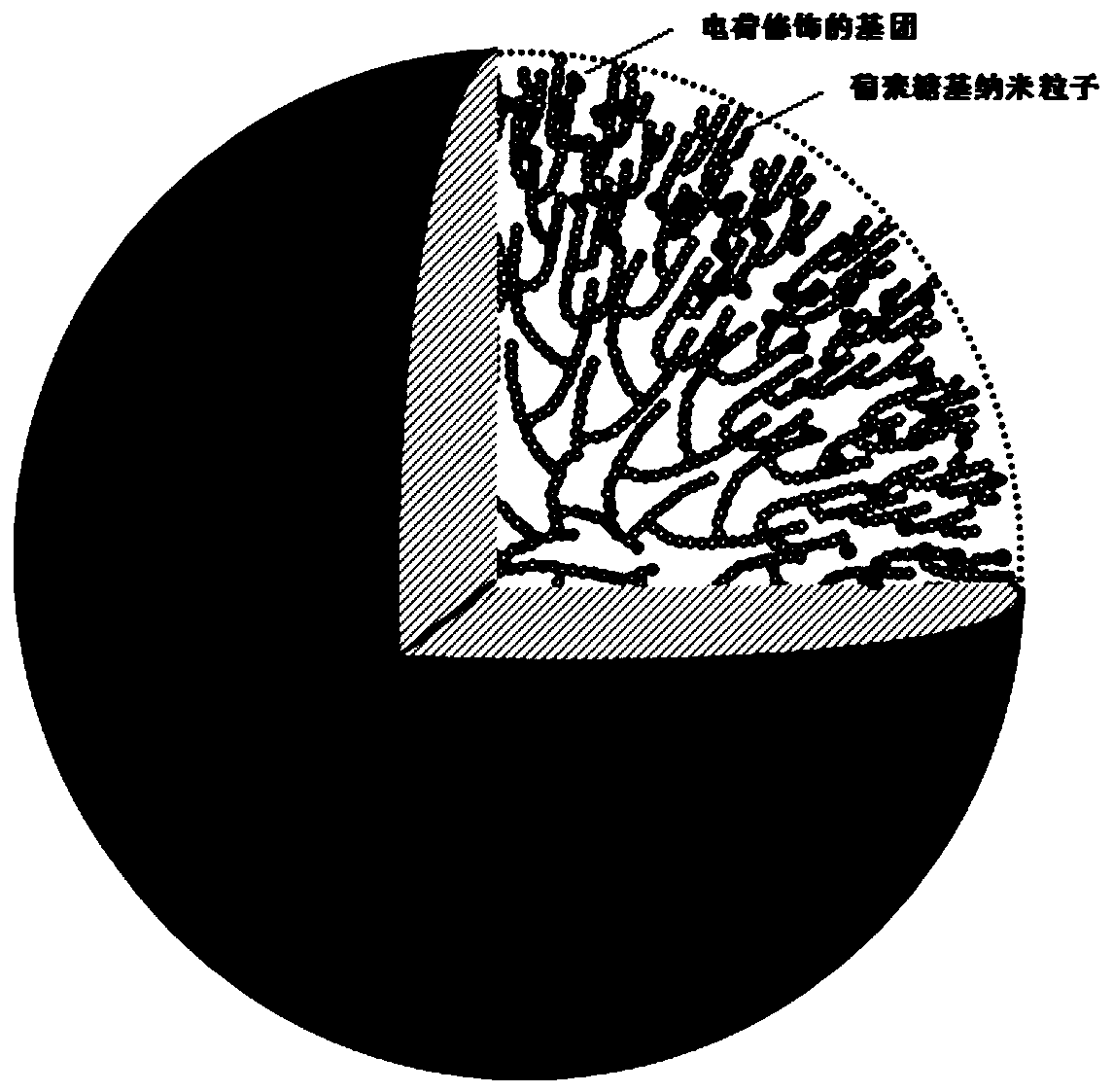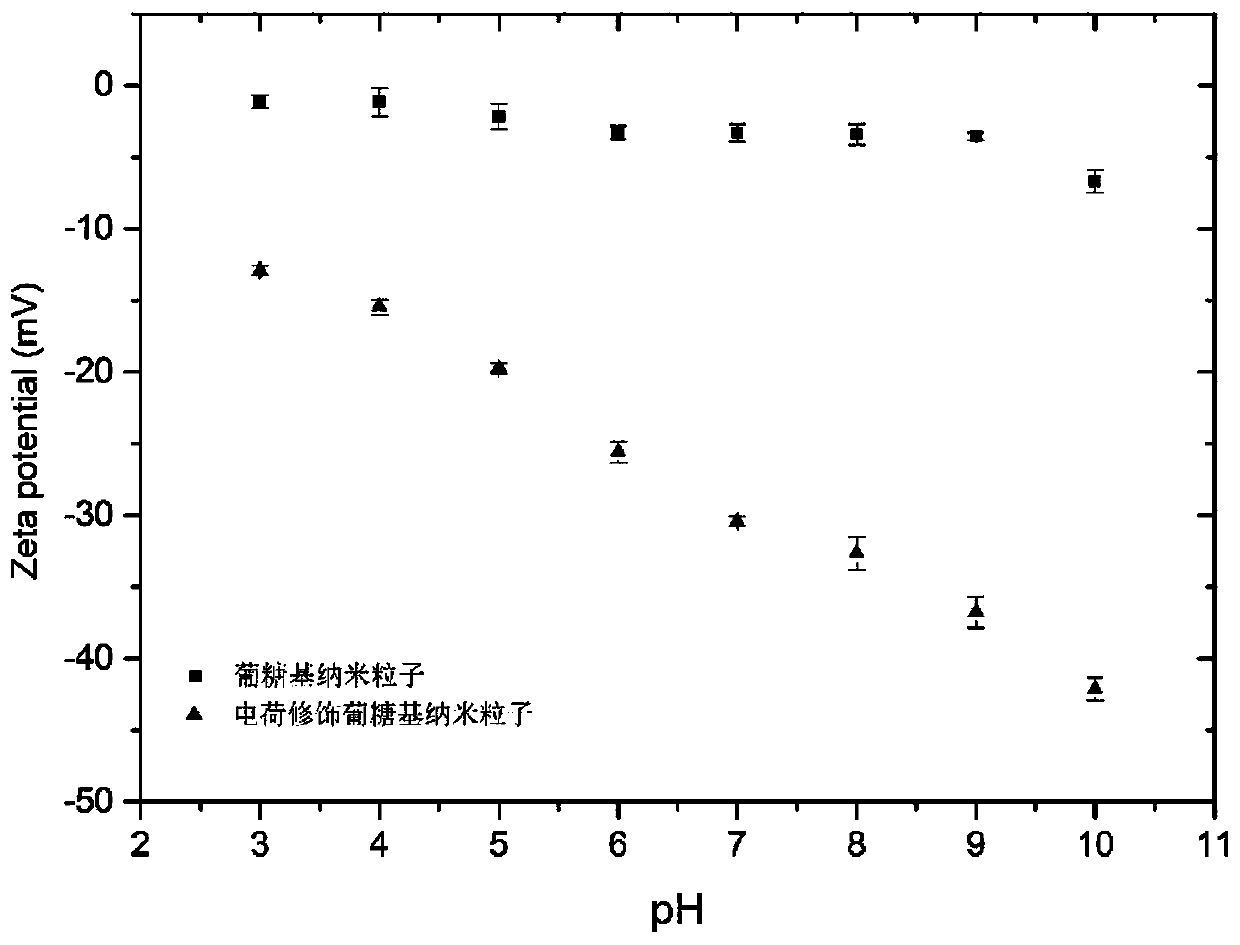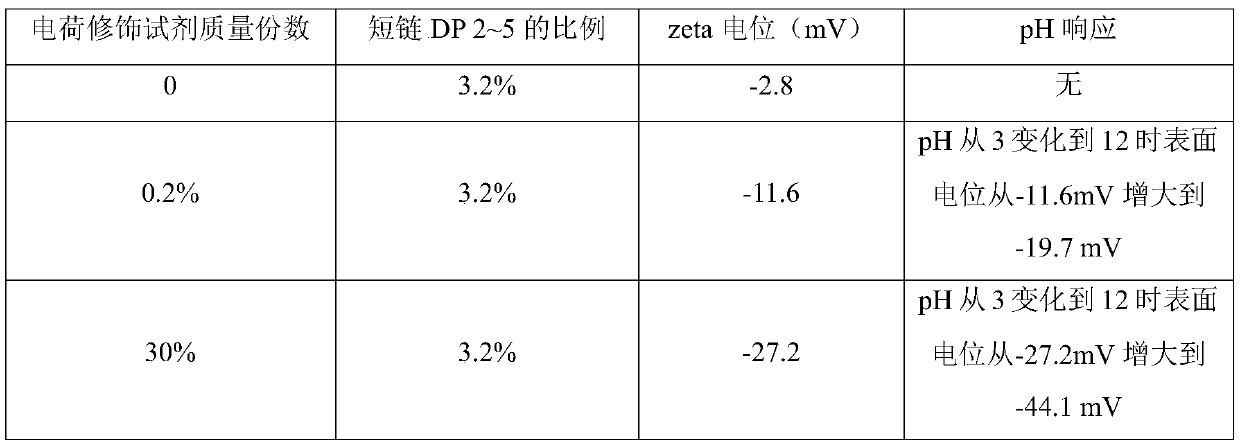Environmental response type glucosyl nanoparticle and processing method thereof
A nanoparticle and environment-responsive technology, which is applied in the direction of pharmaceutical formulations, medical preparations of non-active ingredients, antibody medical ingredients, etc., can solve the problems of few research reports on natural glucosyl nanopolymers, poor safety, and technical difficulty. , to achieve the effect of improving antigen bioavailability and excellent pH stimulation response effect
- Summary
- Abstract
- Description
- Claims
- Application Information
AI Technical Summary
Problems solved by technology
Method used
Image
Examples
Embodiment 1
[0028] Weigh 1g of glucosyl nanoparticles derived from sweet sorghum (molecular weight: 2.1×10 7 g / mol), dissolved in pH 7.0 sodium acetate buffer solution, made into a homogeneous solution with a mass concentration of 10%, added 80U amyloglucosidase, stirred and reacted at a constant temperature for 5 hours under the condition of 50°C, and the precipitate was dried after the enzyme treatment Treatment: Take the nano-particles after the surface thinning treatment to make a solution with a mass concentration of 20%, add 10% octadecenylsuccinic anhydride, adjust the pH value to 8.5, place it in a microwave field with a power of 600W and keep it at 40°C for reaction 8h, the target product was obtained.
[0029] The obtained environment-responsive glucose-based nanoparticles contain 3.5% of short-chain DP 2-5, have an average particle diameter of 45nm, and a dispersed molecular density of 760g / mol·nm 3 , surface zeta potential -21mV.
[0030] Environmental stimulus response effe...
Embodiment 2
[0032] Weigh 1 g of Arabidopsis-derived glucosyl nanoparticles (molecular weight: 6.3×10 6 g / mol), dissolved in pH 3.5 sodium acetate buffer solution, made into a homogeneous solution with a mass concentration of 5%, added 10U maltosidase, stirred continuously at 30°C for 2 hours, and precipitated and dried after deactivation treatment ; Take the nano-particles after the surface thinning treatment to form a solution with a mass concentration of 5%, add 0.5% maleic anhydride, adjust the pH value to 11, place it in an ultrasonic field with a frequency of 50kHz and keep it at 37°C for 4h, that is Obtain the target product.
[0033] The resulting environment-responsive glucose-based nanoparticles contain 2.1% of short-chain DP 2-5, have an average particle diameter of 32nm, and a dispersed molecular density of 490g / mol·nm 3 , surface zeta potential -35mV.
[0034] Environmental stimulus response effect: when the pH in the environment changes from 3 to 12, the surface potential o...
Embodiment 3
[0036] Weigh 1g of glucosyl nanoparticles derived from red algae (molecular weight: 9.8×10 7 g / mol), dissolved in pH 6.0 sodium acetate buffer solution, made into a homogeneous solution with a mass concentration of 20%, added 200U amylolytic enzyme, stirred and reacted at a constant temperature for 0.5h under the condition of 70°C, and dried the precipitate after the enzyme treatment Treatment: Take the nano-particles after the surface thinning treatment to make a solution with a mass concentration of 50%, add 3% tripolyphosphate, adjust the pH value to 7, place it in a microwave field with a power of 200W and keep it at 45°C for 1.5h. That is, the target product is obtained.
[0037] The obtained environment-responsive glucose-based nanoparticles contained 5.7% of short-chain DP 2-5, the average particle size was 74 nm, and the dispersed molecular density was 620 g / mol·nm. 3 , the surface zeta potential -35mV.
[0038] Environmental stimulus response effect: When the pH in th...
PUM
| Property | Measurement | Unit |
|---|---|---|
| The average particle size | aaaaa | aaaaa |
| Surface potential | aaaaa | aaaaa |
| The average particle size | aaaaa | aaaaa |
Abstract
Description
Claims
Application Information
 Login to View More
Login to View More - R&D
- Intellectual Property
- Life Sciences
- Materials
- Tech Scout
- Unparalleled Data Quality
- Higher Quality Content
- 60% Fewer Hallucinations
Browse by: Latest US Patents, China's latest patents, Technical Efficacy Thesaurus, Application Domain, Technology Topic, Popular Technical Reports.
© 2025 PatSnap. All rights reserved.Legal|Privacy policy|Modern Slavery Act Transparency Statement|Sitemap|About US| Contact US: help@patsnap.com



